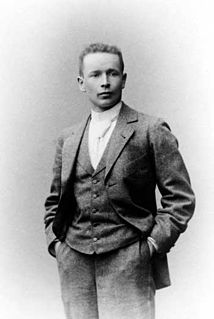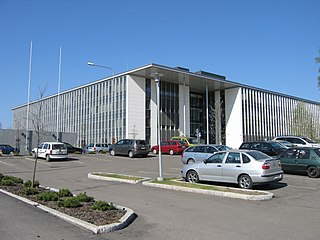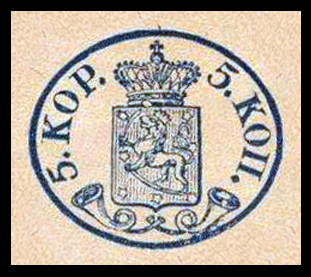
Helsinki is the capital, primate, and most populous city of Finland. Located on the shore of the Gulf of Finland, it is the seat of the region of Uusimaa in southern Finland, and has a population of 658,864. The city's urban area has a population of 1,268,296, making it by far the most populous urban area in Finland as well as the country's most important center for politics, education, finance, culture, and research; while Tampere in the Pirkanmaa region, located 179 kilometres (111 mi) to the north from Helsinki, is the second largest urban area in Finland. Helsinki is located 80 kilometres (50 mi) north of Tallinn, Estonia, 400 km (250 mi) east of Stockholm, Sweden, and 300 km (190 mi) west of Saint Petersburg, Russia. It has close historical ties with these three cities.

The Helsinki University of Technology was a technical university in Finland. It was located in Otaniemi, Espoo in the metropolitan area of Greater Helsinki. The university was founded in 1849 by Grand Duke of Finland, Emperor Nicholas I and received university status in 1908. It moved from Helsinki to Otaniemi campus area in 1966. It was merged into Aalto University in 2010 and briefly had the name Aalto University School of Science and Technology before being split into four schools in 2011.

The University of Helsinki is a public research university located in Helsinki, Finland since 1829, but founded in the city of Turku in 1640 as the Royal Academy of Åbo, at that time part of the Swedish Empire. It is the oldest and largest university in Finland with the widest range of disciplines available. In 2020, around 31,600 students were enrolled in the degree programs of the university spread across 11 faculties and 11 research institutes.

Åbo Akademi University is the only exclusively Swedish language multi-faculty university in Finland. It is located mainly in Turku but has also activities in Vaasa. Åbo Akademi should not be confused with the Royal Academy of Åbo, which was founded in 1640, but moved to Helsinki after the Turku fire of 1827 and is today known as the University of Helsinki.

Gottlieb Eliel Saarinen was a Finnish-American architect known for his work with art nouveau buildings in the early years of the 20th century. He was also the father of famed architect Eero Saarinen.
Vesikko is a submarine, which was launched on 10 May 1933 at the Crichton-Vulcan dock in Turku. Until 1936 it was named by its manufacturing codename CV 707. Vesikko was ordered by a Dutch engineering company Ingenieurskantoor voor Scheepsbouw in 1930 as a commercial submarine prototype, being the prototype for the German Type II submarines. Purchased by the Finnish before World War II, she saw service in the Winter War and Continuation War, sinking the Soviet merchant ship Vyborg as her only victory. After the cease-fire with the Allies in 1944, Vesikko was retired. Finland was banned from operating submarines after the war and she was kept in storage until she was turned into a museum ship.

Katajanokka is a neighbourhood of Helsinki, Finland, with around 4000 inhabitants in 2005. The district is located adjacent to the immediate downtown area, though in the first major town plan for Helsinki from the mid-18th century, the area fell outside the fortifications planned to encircle the city.

Erik Herbert Palmén was a Finnish meteorologist, born in Vaasa. He worked at the University of Chicago in the Chicago school of meteorology on cyclones and weather fronts with Vilhelm Bjerknes. He contributed to the explanation of the dynamics of the jet stream and the analysis of data collected by radiosondes; his preprocessed and quality checked datasets were widely used by other researchers. Palmen was a multisided researcher who published articles in meteorology, geophysics and oceanography. The 1969 book by Palmen and Chester W. Newton, "Atmospheric Circulation Systems: Their Structure and Interpretation", is still used as lecture material in the universities around the world.

Vilho Väisälä was a Finnish meteorologist and physicist, and founder of Vaisala Oyj.

The Finnish Meteorological Institute is the government agency responsible for gathering and reporting weather data and forecasts in Finland. It is a part of the Ministry of Transport and Communications but it operates semi-autonomously.

The Kumpula Campus is a science campus of University of Helsinki. The campus is located some four kilometres from the centre of Helsinki, in the Kumpula district. Completed in 2005, it currently provides study and research facilities for about 6,000 students and 1,000 teachers/researchers.

Utö is a small island in the Archipelago Sea in the Baltic sea and belongs to Finland's Pargas municipality. It is the southernmost year-round inhabited island in Finland. Utö has an area of 0.81 square kilometres and the population was c. 40.

The Bothnian Bay or Bay of Bothnia is the northernmost part of the Gulf of Bothnia, which is in turn the northern part of the Baltic Sea. The land holding the bay is still rising after the weight of ice-age glaciers has been removed, and within 2,000 years the bay will be a large freshwater lake since its link to the south Kvarken is mostly less than 20 metres (66 ft) deep. The bay today is fed by several large rivers, and is relatively unaffected by tides, so has low salinity. It freezes each year for up to six months. Compared to other parts of the Baltic it has little plant or animal life.

Finland has produced postage stamps for use since 1856.

The Finnish Defence Intelligence Agency is the combined signals (SIGINT), geospatial (GEOINT) and imagery intelligence (IMINT) agency of the Finnish Defence Forces. Operational since 2014, its responsibility is to support the defence of Finland through information gathering and analysis as an intelligence agency, organic to the Intelligence Division of Defence Command.

Dynamicum is the name of a building on the Kumpula Campus of the University of Helsinki that is shared by the Finnish Meteorological Institute and the Finnish Institute of Marine Research. Dynamicum is located in Kumpula, Helsinki. Construction on the building was completed in September 2005, at which point in time the Finnish Meteorological Institute and the Finnish Institute of Marine Research moved in. The President of Finland, Tarja Halonen, inaugurated the building in a ceremony on November 8, 2005. Approximately 550 people work in the building.

Aalto University is a public research university located in Espoo, Finland. It was established in 2010 as a merger of three major Finnish universities: the Helsinki University of Technology, the Helsinki School of Economics and the University of Art and Design Helsinki. The close collaboration between the scientific, business and arts communities is intended to foster multi-disciplinary education and research.

Jukka Petteri Taalas is a Finnish meteorologist and Secretary-general of the World Meteorological Organization, headquartered in Geneva, Switzerland. Appointed in 2015 by the World Meteorological Congress, the supreme body of the Organization, he took up the four-year Secretary-General term on 1 January 2016, and was re-elected to a second four-year term on 13 June 2019. He was director general of the Finnish Meteorological Institute from 2002 to 2005 and 2007 to 2015.

Isosaari is an island in Helsinki, part of the Ulkosaaret district of the city, more specifically of Itäsaaret, i.e. ‘eastern islands’. It was one of the fortified islands of the Gulf of Finland. Isosaari is one of the outermost islands in the Helsinki region, and it is a site that is important from the perspective of cultural history. Its sights and its nature are unique.
Aili Linnea Nurminen was a Finnish meteorologist who specialized in fog and cloud conditions and was a pioneer of the country's aviation meteorology efforts. She worked for the Finnish Meteorological Institute from 1926 to 1963.
















